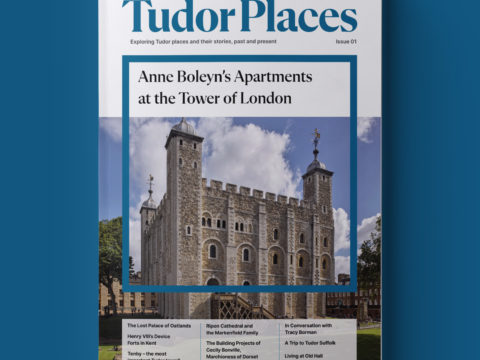Robert Dudley: Life Story
Chapter 9 : The Scottish Queen
In November 1568, the commission to enquire into any hand the now captive Mary, Queen of Scots had had in the death of her husband, Lord Darnley, opened in York, with Robert sitting alongside Cecil as one of the commissioners. The commission was soon moved back to London, where a verdict was deliberately fudged.
As one route to managing the problem of the Queen of Scots, the idea of Robert’s old adversary, Norfolk, marrying Mary, was again mooted (the idea had first been floated in 1566). Robert was in favour of the idea and seems generally to have supported Mary’s claim to be Elizabeth’s heir. If she were married to the Protestant Norfolk, then she might be safely confirmed as the queen’s heir. The idea had support from most of Elizabeth’s council, but no-one had broached the matter with her.
Robert volunteered to do so, but delayed, saying the time was not ripe. Elizabeth, informed of what was going on, gave Norfolk several opportunities to tell her of the plan, but he failed to do so. Wary that some more substantial plot was being laid against her, Elizabeth stormed at both Robert and Cecil that they were scheming on Mary’s behalf.
Robert took to his sick-bed. A worried Elizabeth visited him, and he poured out a confession, saying he had been in favour of a match between Mary and Norfolk for the queen’s sake. Elizabeth, fearing he was genuinely ill, forgave him. Norfolk was less fortunate, and was roundly admonished by Elizabeth. Suddenly, all those councillors who had previously supported the match were nowhere to be found, and Norfolk retired to his estates, without consent, answering royal summonses with the excuse of illness.
Unwilling, or unable, to openly rebel, Norfolk came towards Windsor, but was arrested en route, and sent to the Tower. This provoked a rising in the North, known as the Rebellion of the Northern Earls, which changed the political face of Elizabeth’s reign. Until this time, she had been content to confine religious policy to a clearly Protestant Act of Uniformity, which prescribed the official service, which all must attend. Failure to attend the service (recusancy) was punishable by a fine – initially, not very large. Exceptions were those individuals who had private chapels, who might make their own arrangements. This gave a loophole to many of the nobility and upper gentry, amongst whom the old faith was still followed.
But the rebellion, which, before it collapsed, saw the reinstatement of the Mass in Durham Cathedral, and which was followed by the inflammatory papal bull, Regnans in Excelsis, which released Catholic subjects from their allegiance to the queen, changed matters. Catholics were now the enemy within, recusancy fines were increased, and Catholicism became synonymous with treason.
Elizabeth’s government believed that the Spanish were behind the rebellion, and began a series of negotiations with France for a marriage between Elizabeth and first, Henri, Duc d’Anjou, and after Henri’s accession to the French throne in 1574, to his brother, François. France, of course, like Spain, was largely Catholic (although there was a large Protestant, or Huguenot movement) but the French were willing to ally with Elizabeth as a counter-balance to Spain.
Robert, a confirmed Protestant (or perhaps still hopeful himself), was opposed to such a marriage, and firmly backed up the sticking-point that Elizabeth had created – her refusal to allow the French prince to worship in private as a Catholic. ‘We are bound to thank God’ he said, ‘to see Her Majesty to stand so well to the maintenance of the cause of religion.’
Religious dissension in Europe was increasing. The Netherlands were, by inheritance, ruled by Philip of Spain, but there was a large Calvinist population, which objected to Philip’s policy of enforcing Catholicism. Even those Netherlanders who were Catholic were often opposed to Spanish dominance in principle, and as the 1570s advanced, what became known as the Eighty Years’ War became increasingly bloody.
These attacks on their co-religionists encouraged the more evangelical members of Elizabeth’s government – Walsingham and Leicester – to urge her to intervene. Elizabeth and Cecil were more circumspect – fearing intervention in The Netherlands as costly, likely to benefit only the French, and for Elizabeth, an unjustified support of rebels against their rightful monarch.
Nevertheless, negotiations with France continued, until, in August, the Protestant world was horrified by the crack-down on Huguenots, which led to the appalling Massacre of St Bartholomew, which the king, Charles IX and the queen-mother, Catherine de’ Medici, were powerless to contain. In the face of this shocking event, the marriage plans lapsed, and Elizabeth was again under pressure to support Protestants militarily, which she continued to resist.
Lord Robert Dudley
Family Tree


